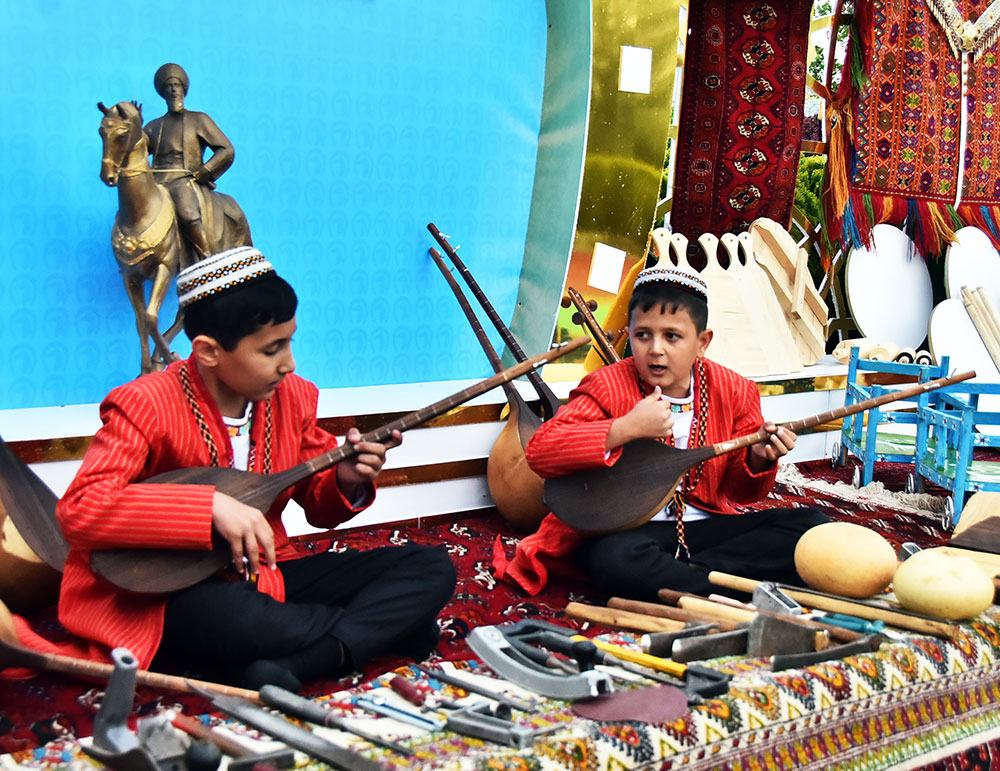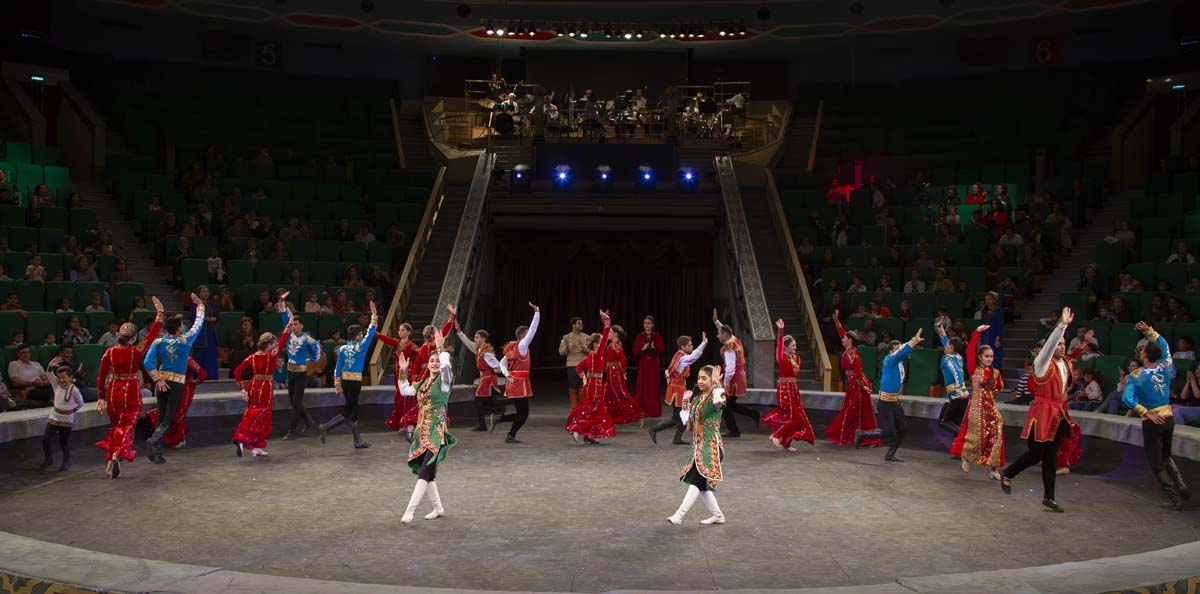Just listen to melodies played on the dutar and gijak (a spike fiddle). Reminiscent of lines from a destan, they vividly evoke an array of feelings…They conjure up images of Turkmen nature in the mind of the listener: delightful tunes of sub-mountain plains, an echo resounding in ravines, the sound of a babbling brook, the gentle lapping of sea waves, a soft rustle of golden grains of desert sand, and a breath of wind…
Turkmens have always revered bagshi and musicians. The well-deserved fame of bagshis may be rightly shared by dutar makers, usta, who bring a piece of wood to life and make it produce beautiful sounds…
Not only is the dutar-making process labor intensive and requires talent and a high degree of expertise, it is very time consuming and needs great patience too. Starting from wood preparation, it can take from months to one year to make a good instrument. Turkmen luthiers make the body and top (or soundboard) of the dutar using wood from perennial mulberry tree trunks that have no flaws. The wood first is “seasoned” that is allowed to dry in the sun, and only after that work pieces are cut from it. No less difficult is making the gijak, a bowed string instrument with a sophisticated and soulful sound and a rich timbre.
Therefore, when we talk about master makers of national musical instruments, we usually imagined them to be well into middle age.
Brothers Maksat (19) and Guvanch Magtymov (17), dutar makers (dutarchi) from Goşahowly daikhan association, S. Turkmenbashi etrap belie their young years, having proved that true artistry has no age limit.
Their wonderfully expressive dutars and gijaks are much sought after by both professionals and amateur musicians alike. And it is not even the luthiers’ young age, what really amazes everyone is how the boys, who come from a non-musical family, have managed to learn the tricks of the trade on their own. As a child, Maksat got incredibly enthusiastic about the idea of making dutars and gijaks. Back then, he delighted his parents and friends by his artfully crafted clay toys. When Maksat told his parents of his desire to become a bagshi, his father willingly consented to buy the dutar for him. The family lived in a remotely situated village, and the fulfillment of the father’s promise was delayed for a number of reasons…
Once when Otuzmyat returned home from work, Maksat showed him the dutar he had made by himself. Although not perfectly shaped, it was the real dutar with a good quality sound!
At that moment, the father realized his son’s dream was not simply a fleeting desire, but it was his true calling. And he decided to find a master dutarchi who would help Maksat to perfect his dutar-making skills. When he heard of Bayar Usta, who lived in Kounyaurgench etrap, he went there together with his son.
Bayar Usta spent a long time carefully examining the dutar and asking the boy questions about the techniques. He was truly surprised that Maksat had learned the craft by reading books, following helpful tips and watching TV programs.
- Maksat has all the necessary skills; there is no need to teach him. I will share the tricks and subtleties of woodwork with him, the dutar maker said. Maksat and Guvanch, who followed in his older brother’s footsteps, did not learn everything immediately. They had to make every effort to achieve the desired results. Their father did his best to help his sons in word and in deed. A farm machinery operator, very familiar with the local area, he found suitable mulberry tree trunks, lent a hand with making necessary tools (each maker uses individually made tools), and bought strings…
Despite their young age, Maksat and Guvanch are now accomplished dutarchi with their distinctive signature styles. Their instruments have been featured in various exhibitions. Local destanchi (epic ballad singers) perform to the accompaniment of their instruments. The young masters have also learned to play the dutar and gijak. They believe that it is not possible for makers to endow their instruments with the power to produce expressive and resonate sounds if they cannot play them. I would like to add only one thing: the dutar “sings” in the language of its maker’s talent and inspiration.







